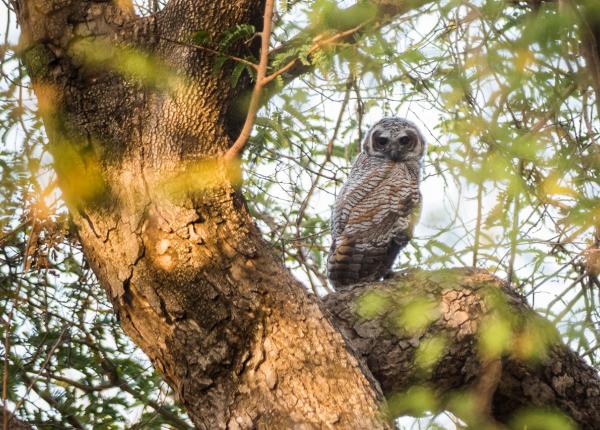How The Peregrine Fund is Helping
The Peregrine Fund is not working directly with Mottled Wood-owls, but our conservation efforts through habitat protection, education, and community outreach extend to all raptor species, including this owl. We also supply literature to researchers from our avian research library, which helps scientists around the world gather and share important information on raptor conservation. Additionally, our support of the Global Raptor Information Network gives raptor researchers tools to more efficiently conduct their own studies while contributing to a global program. It also provides citizen scientists a way to participate in raptor science and conservation.
Where They Live
The Mottled Wood-owl is found mainly throughout India, as well as in parts of Myanmar and Pakistan. They inhabit a wide variety of ecosystems including wooded areas, lowlands, groves of mango, tamarind and banyan trees, as well as dense trees found near human occupied villages. They are a lowland species, avoiding higher altitude habitats.
Why They Need our Help
This owl is categorized as a species of Least Concern. However, this species is very poorly studied and there is very little information on its population trends.
What They Eat
This lovely owl is a skilled hunter and will hunt a number of different prey from rodents - including shrews, rats and mice, small to medium-sized birds, such as a Rock Dove, as well as reptiles, such as lizards, and invertebrates such as crabs, beetles; scorpions, and spiders.
Nests, Eggs, and Young
Like so many owl species, this owl often nests in natural tree hollows or natural cracks. It also might rarely lay its eggs in stick nests built and abandoned by other birds. When the time is right, the female will lay between 2–3 eggs. Scientists still need to learn how long eggs must be incubated for, at what age the young owlets fly from the nest, and so much more!
Mottled Wood-owl and the World Center for Birds of Prey
The World Center for Birds of Prey offers fun ways to learn about raptors. Interactive activities, tours, interesting videos and a children's room with activities from coloring sheets to quizzes to costumes await you. At our visitor center, you can see live owls up close - such as a Verreaux's Eagle-owl or a Western Screech-owl, and learn about the wonderful and interesting adaptations they have in order to survive in their respective habitats. There is also a touch table with owl feathers and other natural objects available for exploration. Take a stroll along a short nature trail and look for Barn Owls or even a Northern Saw-whet Owl perched in the trees.
References:
Holt, D. W., R. Berkley, C. Deppe, P. L. Enríquez, J. L. Petersen, J. L. Rangel Salazar, K. P. Segars, K. L. Wood, and J. S. Marks (2020). Mottled Wood-Owl (Strix ocellata), version 1.0. In Birds of the World (J. del Hoyo, A. Elliott, J. Sargatal, D. A. Christie, and E. de Juana, Editors). Cornell Lab of Ornithology, Ithaca, NY, USA. https://doi.org/10.2173/bow.mowowl1.01









